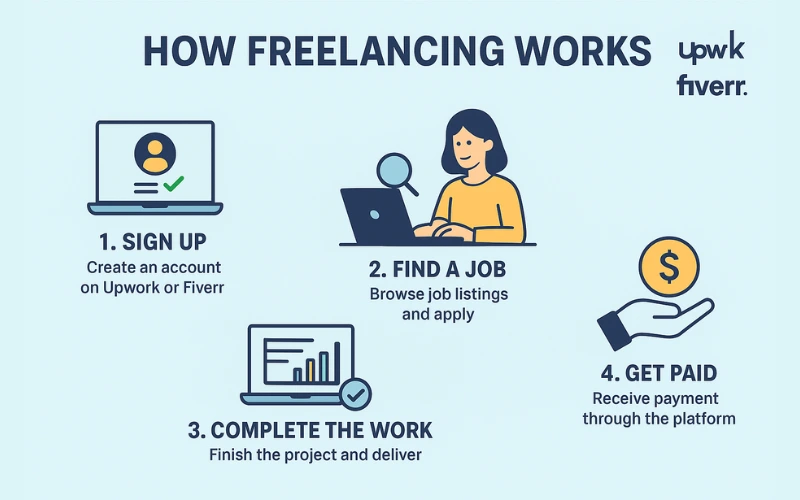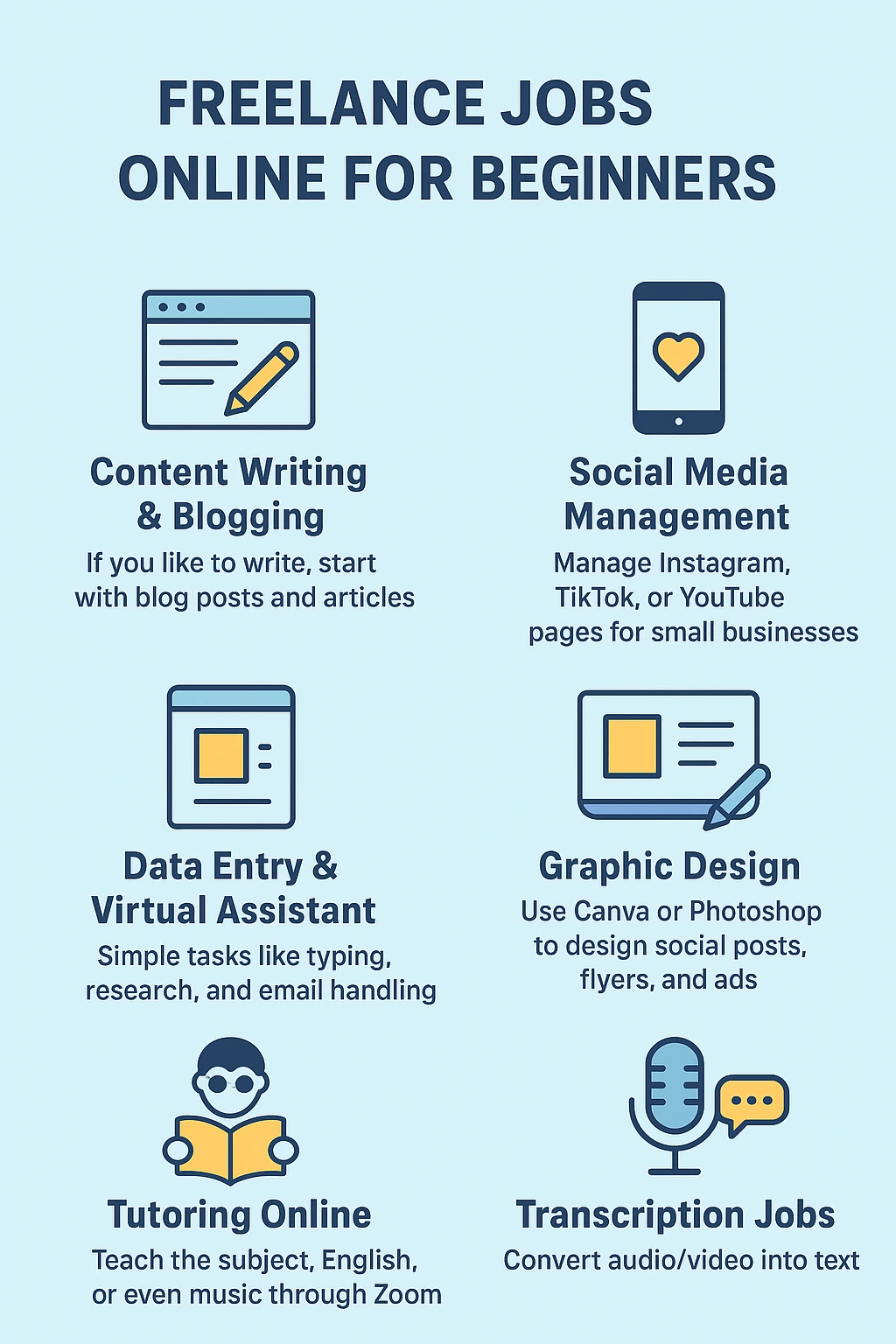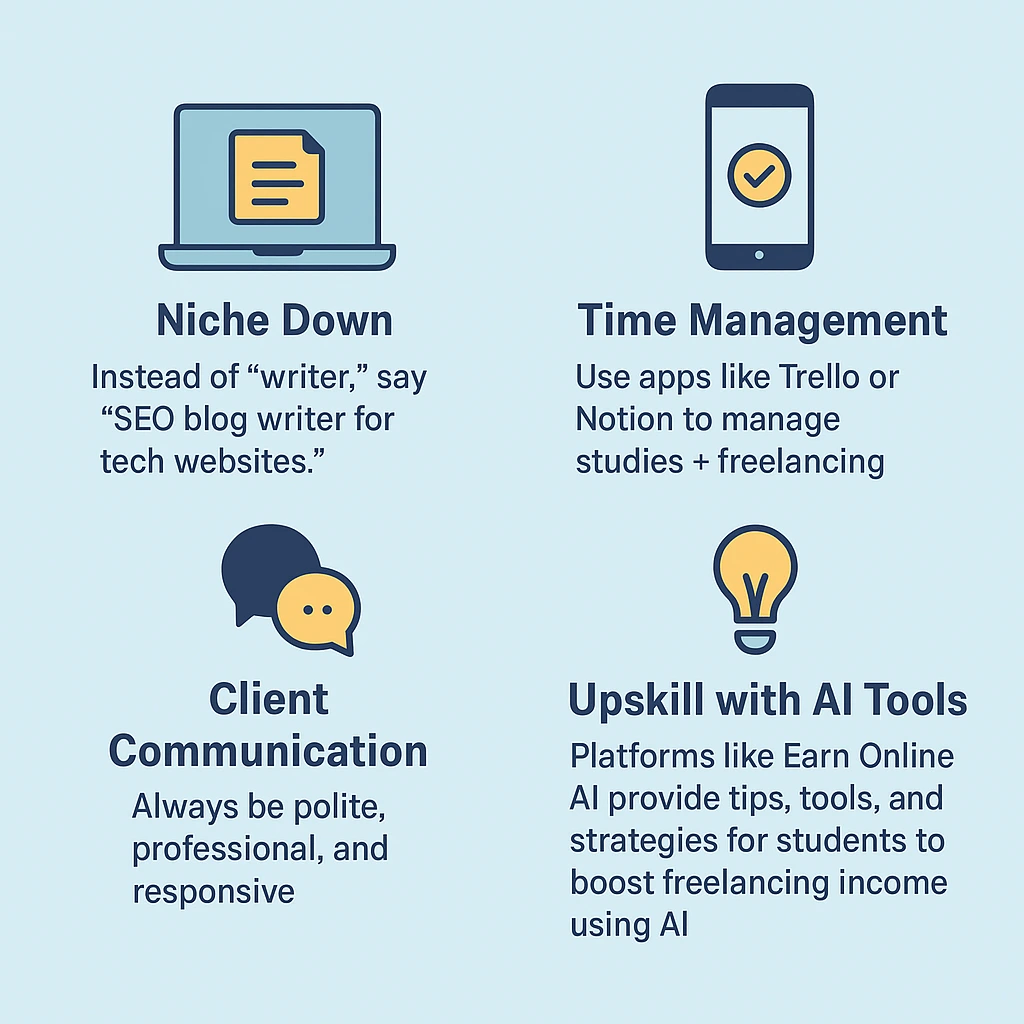
Freelancing Jobs for Students: Best Websites & Online Opportunities in 2025
Today’s students are not only learners – they are hustlers, producers and future entrepreneurs. With the cost of growing and increasing demand for digital skills, more and more students are searching for freelancing jobs for students. The beauty of freelancing is that you do not need a degree or full -time commitment; You can start a part -time, create experience, and earn money online when studying.
In this wide guide, we will find out the best freelancing websites, how to find online Freelance jobs online for beginners, and practical suggestions to choose freelancing websites to earn money in 2025.
What Are Freelancing Jobs for Students?
Freelancing means working independently based on the project rather than being tied to an employer. For students, it is a flexible way to gain experience in real-world projects, create a professional portfolio, work as well as work at its own speed and earn additional income from home. From material writing, social media management, and graphic design to programming, translation and data entry, there are hundreds of freelancing jobs for students available online.
Why Should Students Choose Freelancing?
Freelancing jobs for students are the beginning of the right career as they provide unmatched flexibility, allowing you to determine your work hours and easily balance the study with part -time work. They also open doors for global opportunities, enabling students to work with customers from the United States, Britain, Canada and many other countries. Every project adds to skill development, which helps you learn the skills of industry-descends while in college. The best part is financial freedom – students can start earning online only without relying on pocket money. Over time, freelancing helps in creating a strong portfolio that leads to career growth, high-paying opportunities or even entrepreneurship. According to the earnings online AI, students who start freelancing quickly feel more confident in entering the professional world because they already have the experience of handling real customers and projects.
Best Freelancing Websites for Students in 2025
When it comes to freelancing websites to earn money, beginners often get confused about where to start. Here’s a list of the most reliable platforms for students:
1. Fiverr
- Great for beginners
- You can list services (gigs) starting at $5
- Popular categories: content writing, logo design, video editing
2. Upwork
- Professional platform with global clients
- Students can bid on projects related to data entry, research, and digital marketing
- Builds long-term client relationships
3. Freelancer.com
- Best for competitive bidding
- Projects available in IT, design, writing, and admin support
- Suitable for those who want to learn how to pitch services
4. Toptal (for advanced students)
- Focuses on highly skilled freelancers (coding, finance, design)
- Not ideal for complete beginners, but perfect if you are advanced in tech skills
5. WorknHire & Truelancer (India-based platforms)
- Easy entry for Indian students
- Payment in INR directly to your bank account
- Ideal for freelance jobs online for beginners
👉 Tip from Earn Online AI: Don’t just create accounts on one platform. Try 2–3 freelancing websites to increase your chances of getting work faster.

Freelance Jobs Online for Beginners
Not every student is a Pro Kodar or designer, but that’s fine! Online are early-friendly jobs:
- Content Writing & Blogging –If you like to write, start with blog posts and articles.
- Social Media Management – Manage Instagram, TikTok, or YouTube pages for small businesses.
- Data Entry & Virtual Assistant – Simple functions like typing, research and email handling.
- Graphic Design – Use canva or Photoshop to design social posts, flyers and advertisements.
- Tutoring Online – Teach the subject, English, or even music through the zoom.
- Transcription Jobs – Convert audio/video into lesson.
Most of these can be done with free devices and no advanced skills are required to complete freelance jobs for beginners.

How to Get Started with Freelancing as a Student
Here’s a step-by-step roadmap for students:
- Identify Your Skills – Writing, design, coding, research, or social media?
- Create a Portfolio – Even sample projects are enough for beginners.
- Register on Freelancing Websites – Fiverr, Upwork, and Truelancer are great starting points.
- Write a Winning Profile – Highlight your student status (clients like fresh energy).
- Start Small – Take low-paying jobs first to build ratings and reviews.
- Learn & Upgrade – Keep improving through free resources, YouTube, and courses.
Remember, clients don’t just pay for skills—they pay for reliability, communication, and creativity.
Tips to Earn More as a Student Freelancer
- Niche Down: Instead of “writer,” say “SEO blog writer for tech websites.”
- Time Management: Use apps like Trello or Notion to manage studies + freelancing.
- Client Communication: Always be polite, professional, and responsive.
Upskill with AI Tools: Platforms like Earn Online AI provide tips, tools, and strategies for students to boost freelancing income using AI.

Freelancing Websites to Earn Money – Which One Is Best?
Choosing the right platform depends on your skills:
- Writers & Designers → Fiverr, Upwork
- Programmers & Developers → Toptal, Freelancer
- Beginners in India → Truelancer, WorknHire
Ultimately, the best freelancing websites to earn money are the ones where your skills match the demand.
Conclusion
Freelancing is no longer a side hustle; It is becoming the choice of a mainstream career. For students, it is the best way to gain confidence in financial freedom, real -world skills and career. You can start your freelancing journey today by choosing the right freelancing websites to earn money, searching for freelance jobs online for beginners, and continuously, you can start your freelancing work from home journey today.
As Earn Online AI always says: “Start small, stay consistent, and scale big.”
So, if you are a student looking for freelancing jobs for students, this is the perfect time to begin!
FAQs
Q1: What are the easiest freelancing jobs for students?
A: Content writing, data entry and social media management are the easiest and the earliest-friendly.
Q2: Can students really earn money online through freelancing?
A: Yes! Many students earn side income through platforms such as Fiverr, Upwork and Truelancer.
Q3: Which freelancing websites are best for beginners?
A: Fiverr, upwork and Freelancer.com are perfect for freelance jobs online for beginners for earn money online and side hustlers.
Q4: How much can students earn freelancing?
A: Beginners may start with minimum 50$–100$ per month, but skilled students can grow to min to max 500$–$1000$ monthly earnings.
Q5: How do I get clients without experience?
A: Create sample projects, show reviews and optimize your profile, and apply consistently. Clients often give students a chance if they show passion and professionalism.